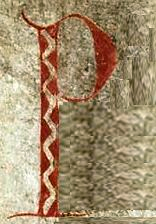The Mabinogi are the oldest stories on record in Britain.
These are mature narratives where women and men grow, change, and struggle with their fate, their society, and with who they are in themselves. Often known as Celtic myths or legends, the tales are fine literature in their own right. They tell of kings, queens, magicians, destiny and war, children and love.
The Mabinogi stories were designed to fit together as a single related work, in 12thC Wales. That was when the Norman Conquest was pushing at Welsh culture with its influence. The stories themselves go back long before that though, developing in ancient tribal society storytelling. However the later mediaeval attitudes and customs overlay that earliest ancestral level.
The stories were written (scribed) in mediaeval manuscripts, some of which still survive. The oldest complete version is Llyfr Gwyn, the White Book, named after the white colour of its cover (gwyn = white). It is kept safely in the National Library of Wales, where it can be visited and seen today. A slightly later version Llyfr Coch, the Red Book, is kept at the Bodleian Library, Oxford, in England (coch = red).
The manuscripts were scribed in mediaeval Welsh (Middle Welsh). The Mabinogi stories began to be published in modern print form in 1795 by William Pughe. He translated them into English, and worked on a complete collection of mediaeval Welsh stories, including the Mabinogi, for over 40 years. Sadly he died just before he could publish. The task was then carried out magnificently by the formidable Charlotte Guest, an Englishwoman. Her series of eleven tales published 1838-1845 used the title The Mabinogion. This collection became well known, passed through several translations , and went online in 2002.
Many people now know the title ‘ Mabinogion.’ This means a list of eleven or twelve tales taken from the manuscripts described above. The Mabinogion contains the Mabinogi as four of its eleven parts. But the ‘Mabinogion‘ as a name for the larger collection is an old mistake made in the mediaeval manuscript, a single ‘typo.’. It became established as a convenient name. Recently John Bollard has challenged the idea that the Mabinogion collection makes sense as a unit at all. He says the eleven stories are too different, their apparent unity deriving from survival in the same manuscript.
This website is mainly about the Mabinogi, also known as Pedair Cainc, or the Four Branches. There is also a fair amount of information about other connected mediaeval literature such as stories known from the larger Mabinogion collection, plus their social context, and modern theories.
The Mabinogi are one of the most fascinating source works of world literature. They are an inspiration for legends, artworks, poetry, theatre, music, and spirituality. They repay careful study for they are far more than simple stories. We can find in them links to mediaeval politics and laws, ancient lore and mythology, sophisticated literary structures, a wise humour and a vision of cooperative society. This wealth is all displayed in a deceptively simple style so the tales can delight children and adults alike with the joy of a really good story. This is a rich gift from Wales, the earliest known stories in Britain.


